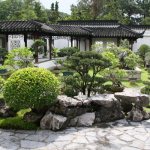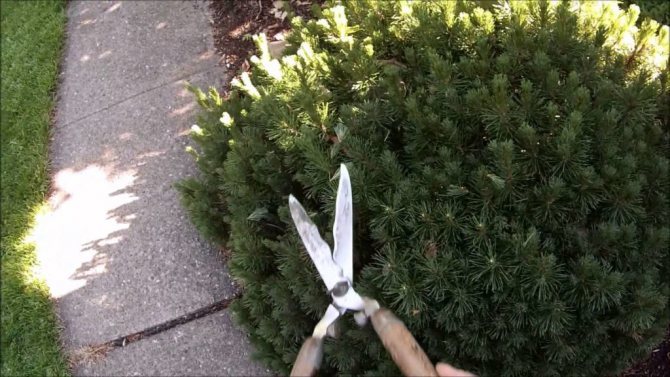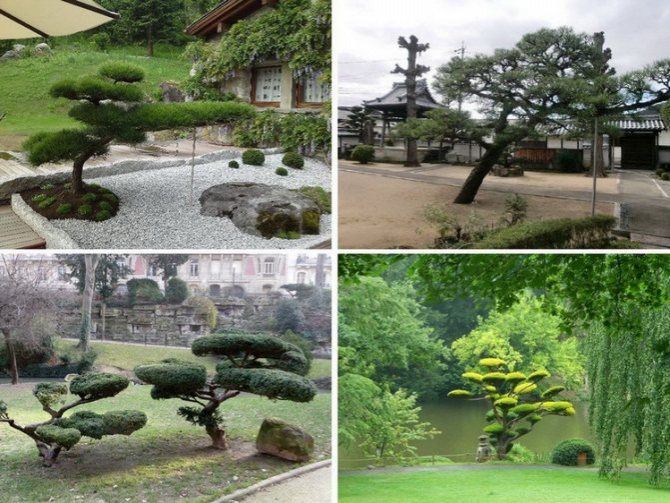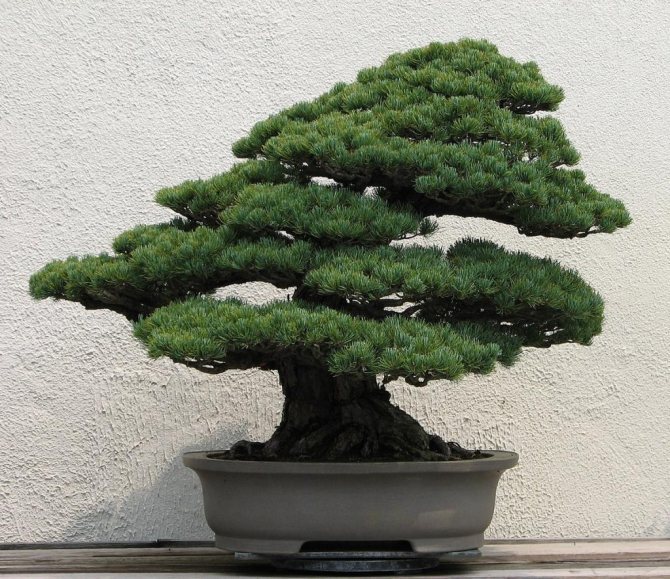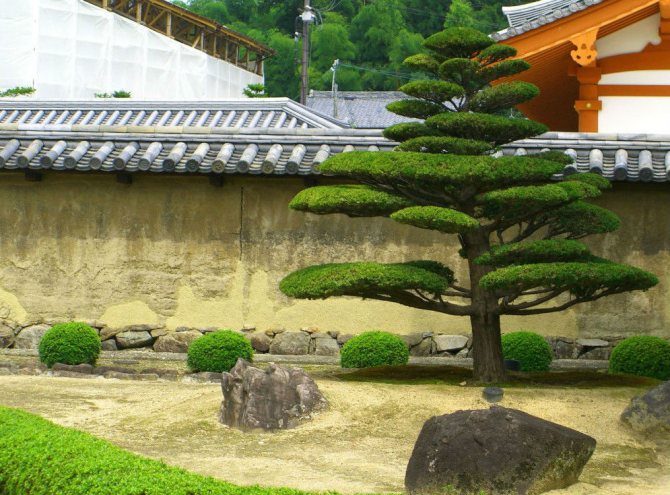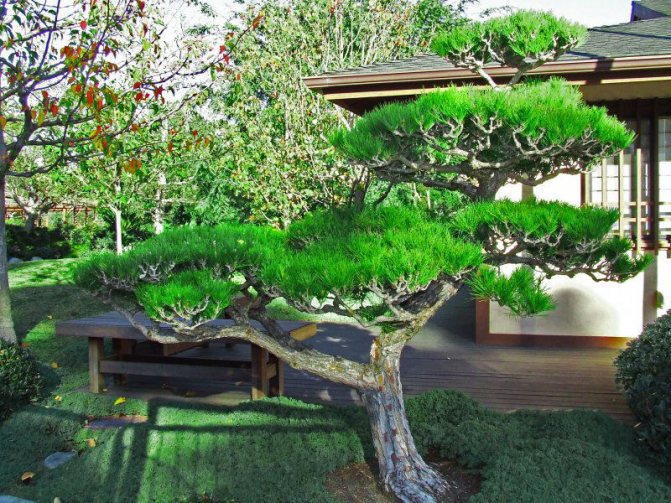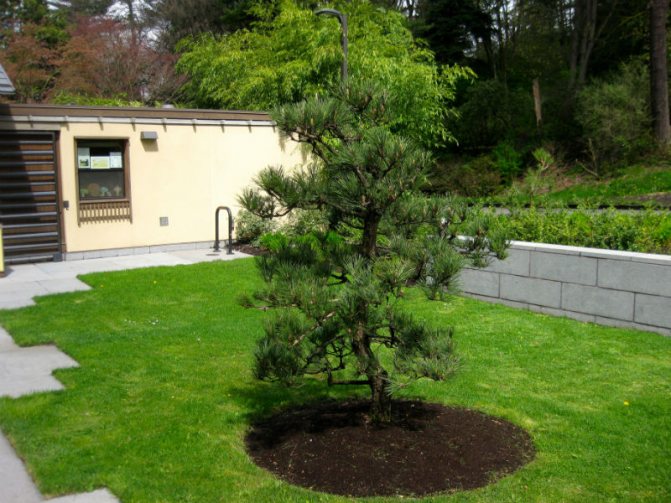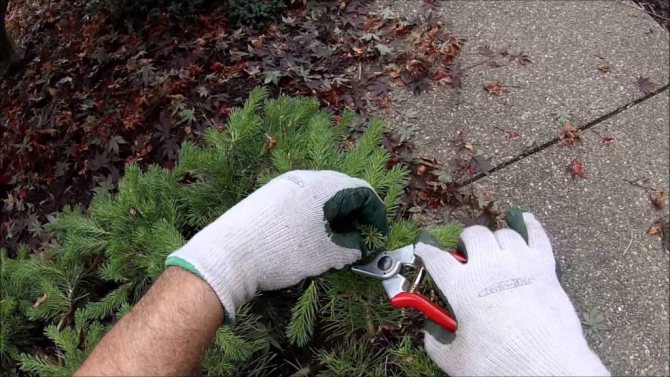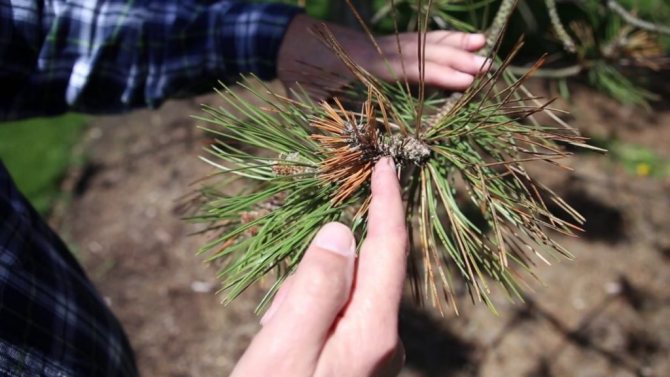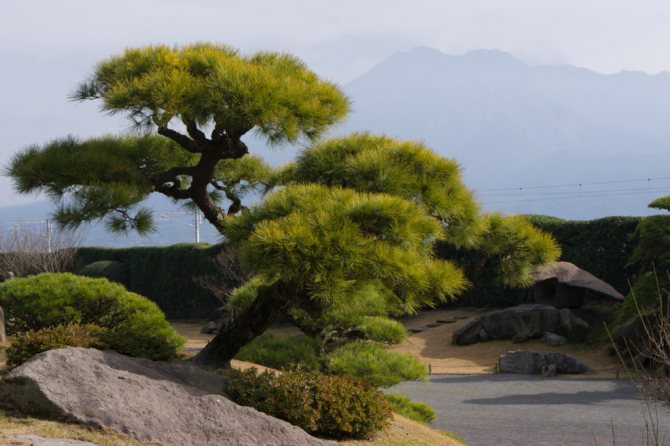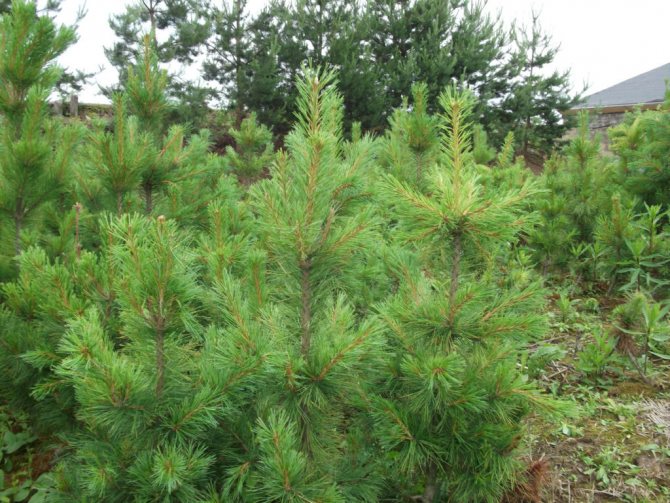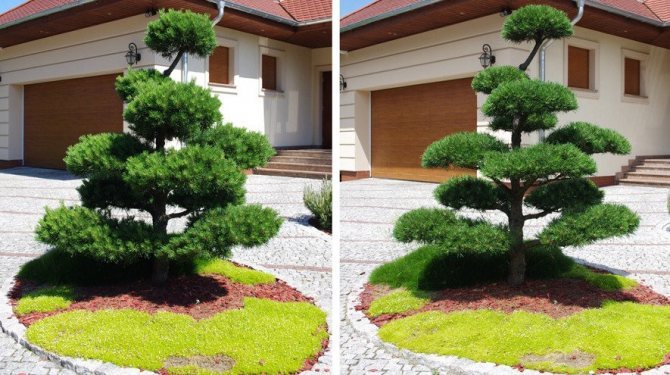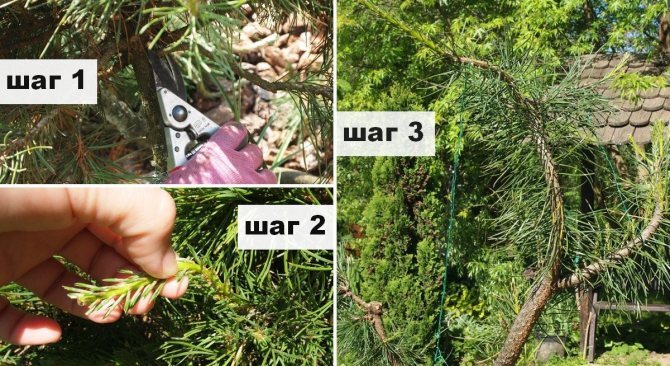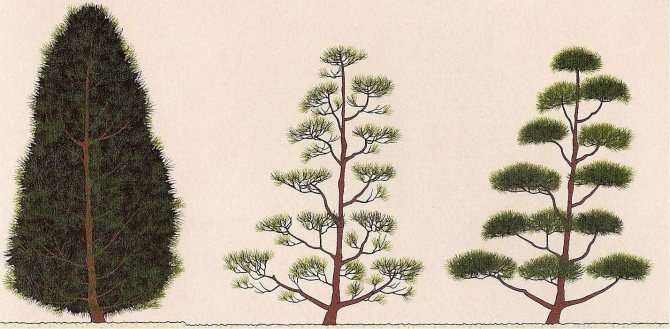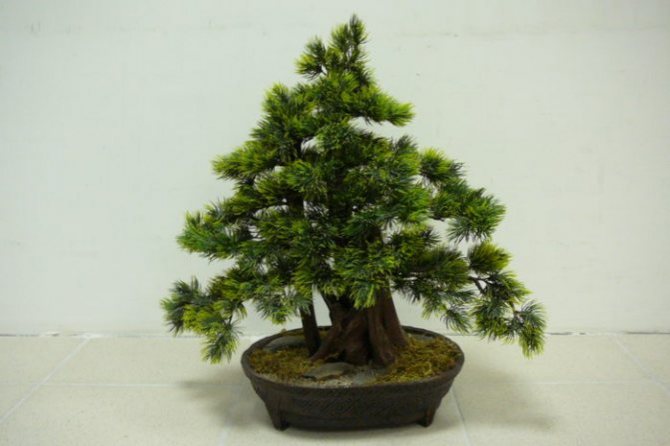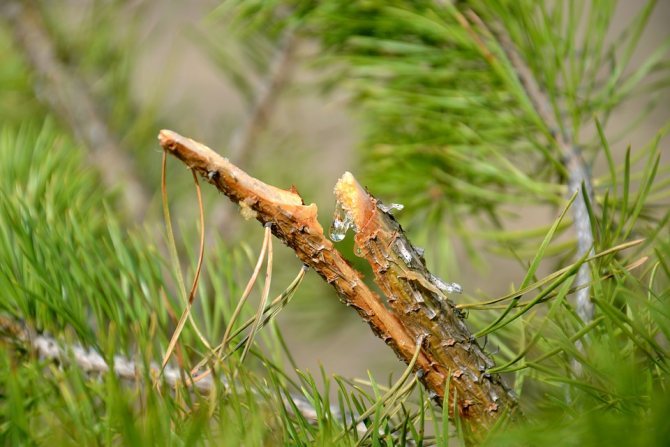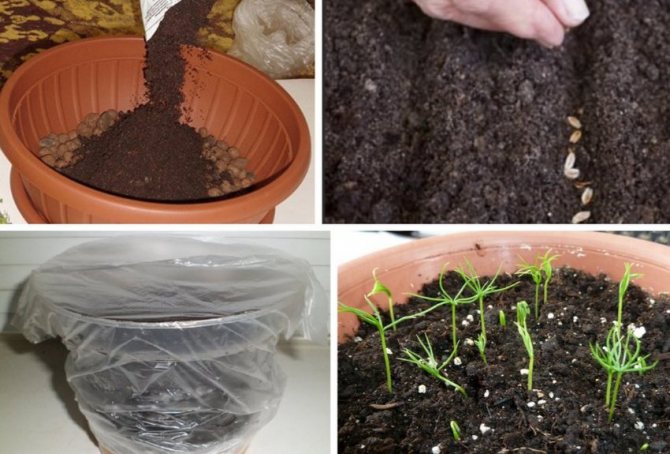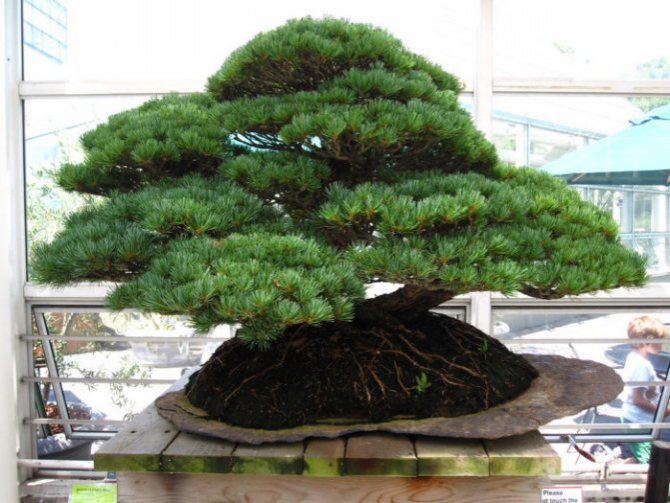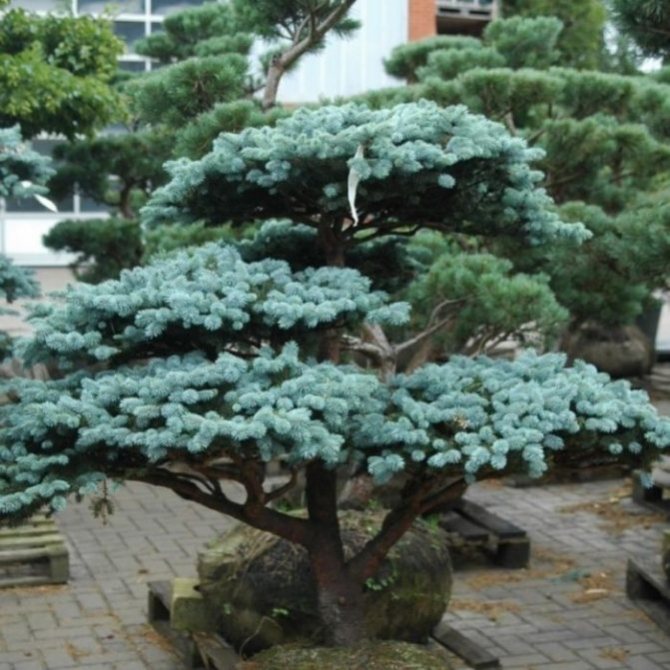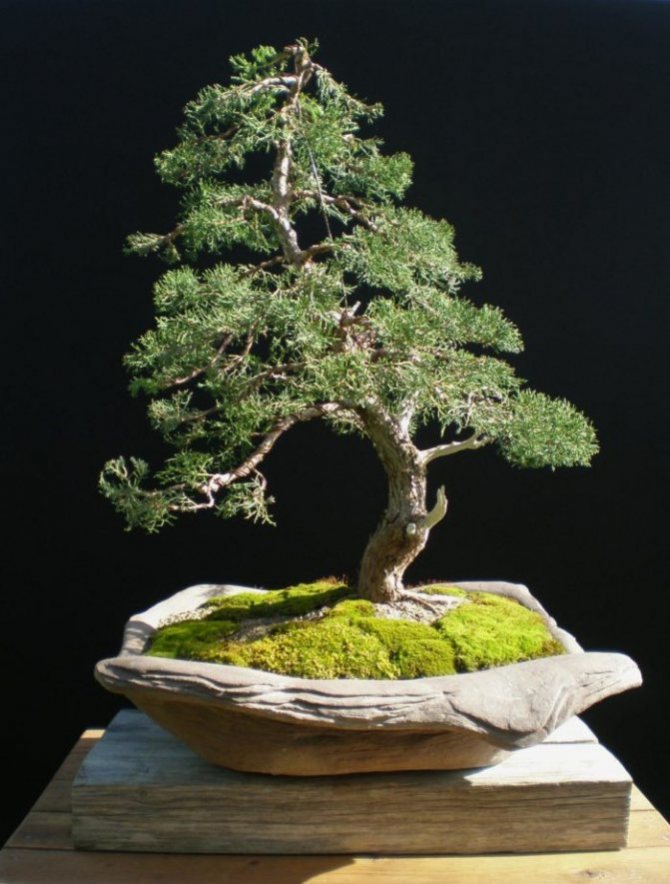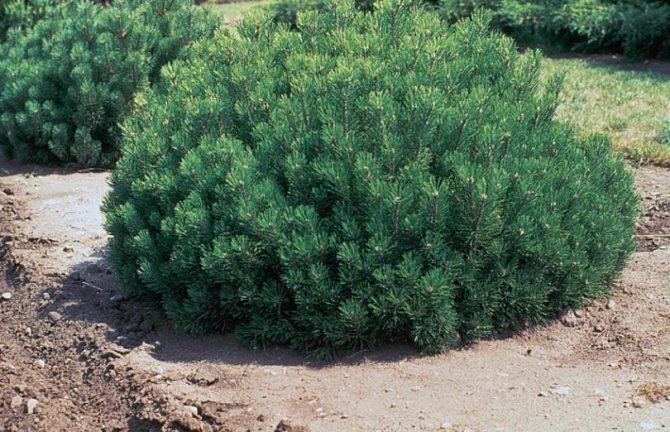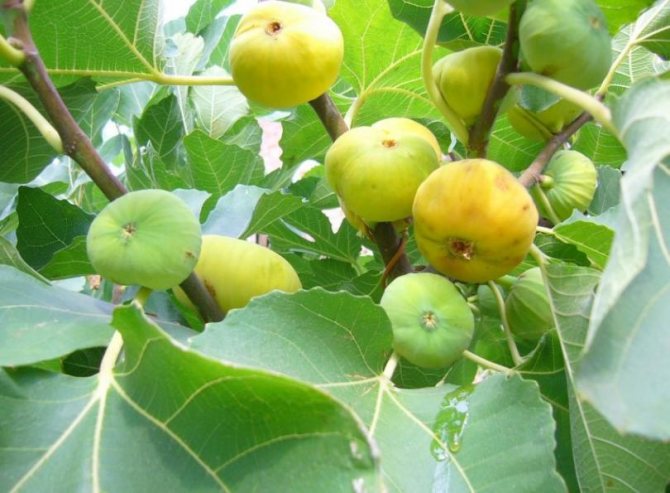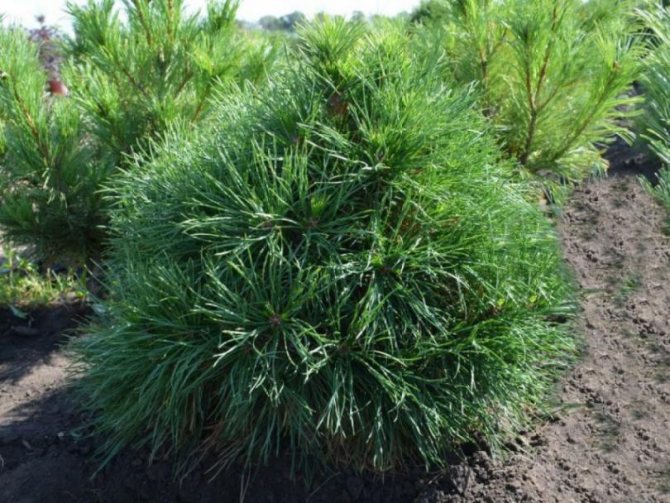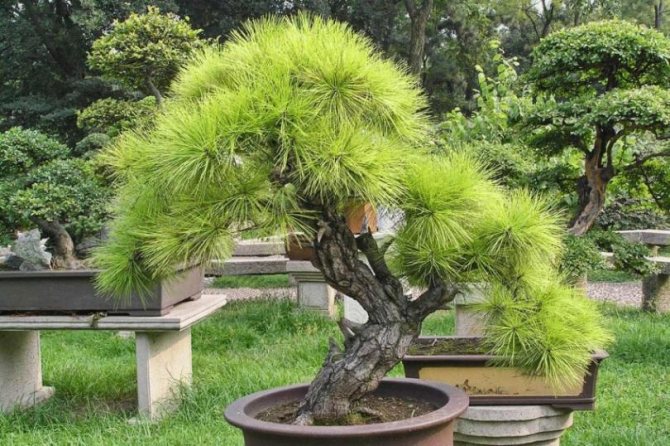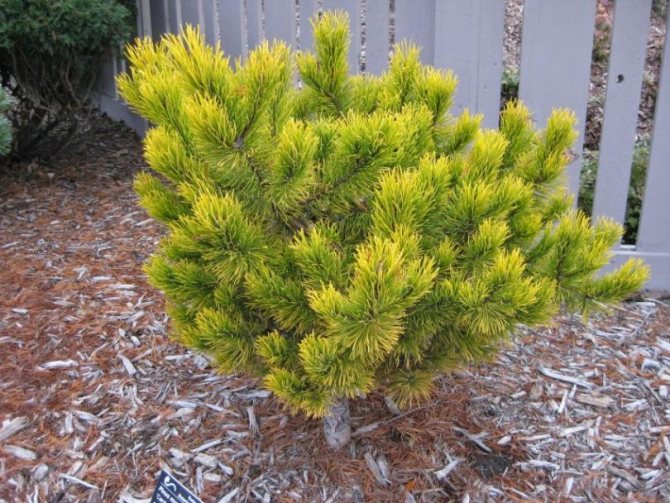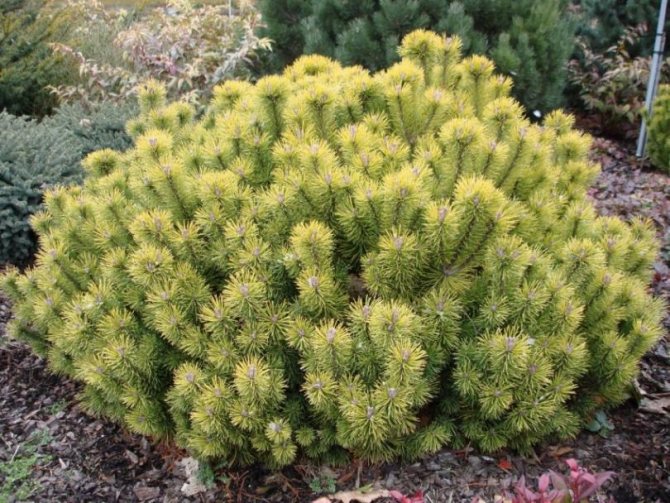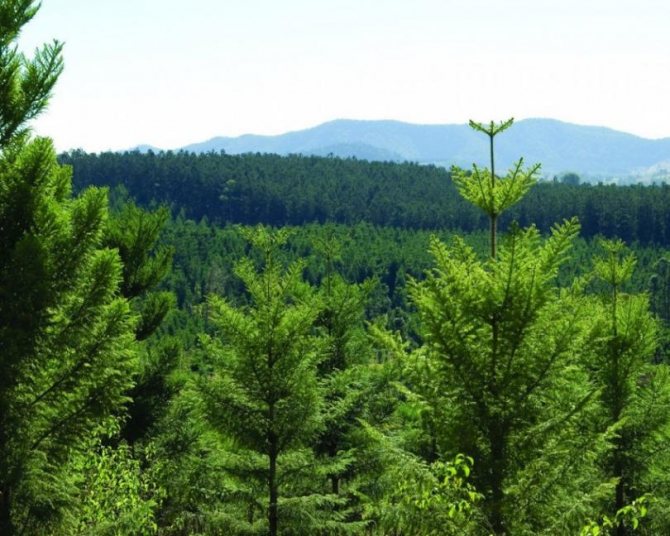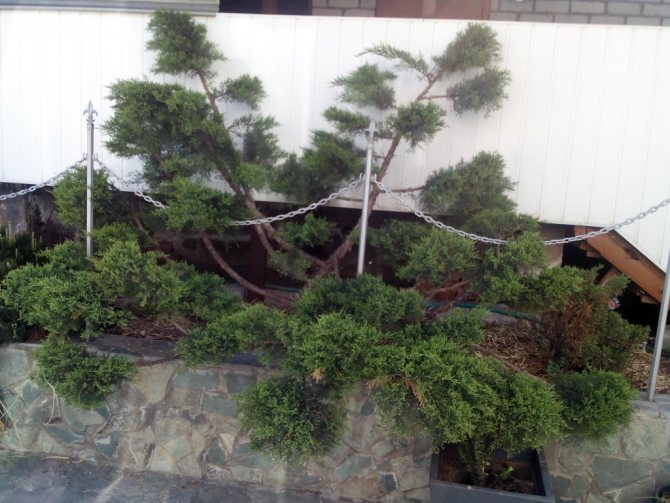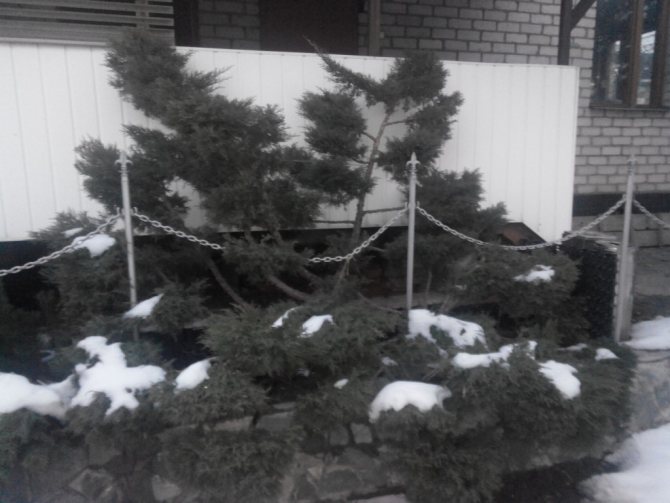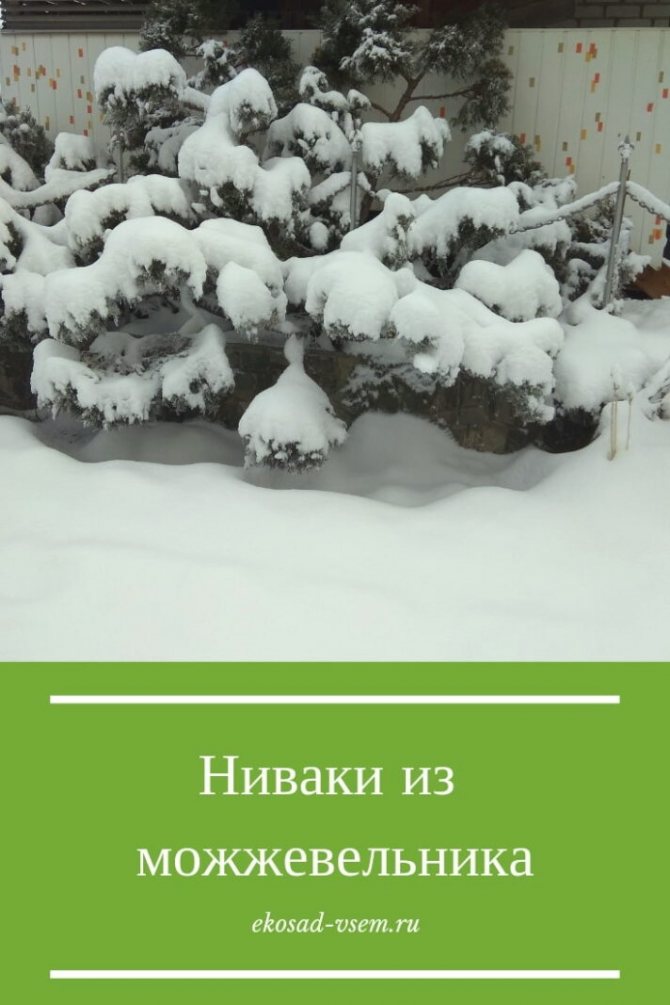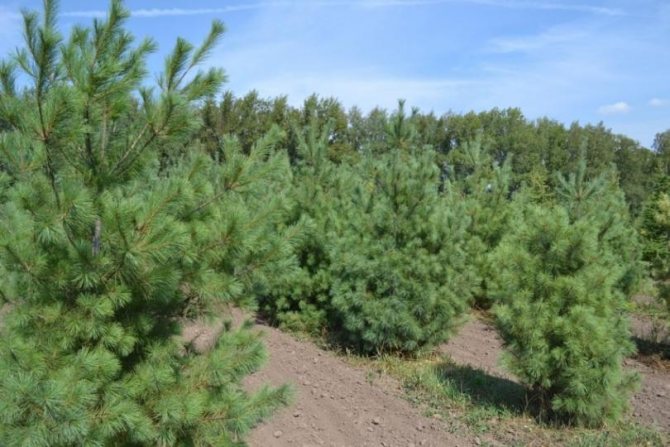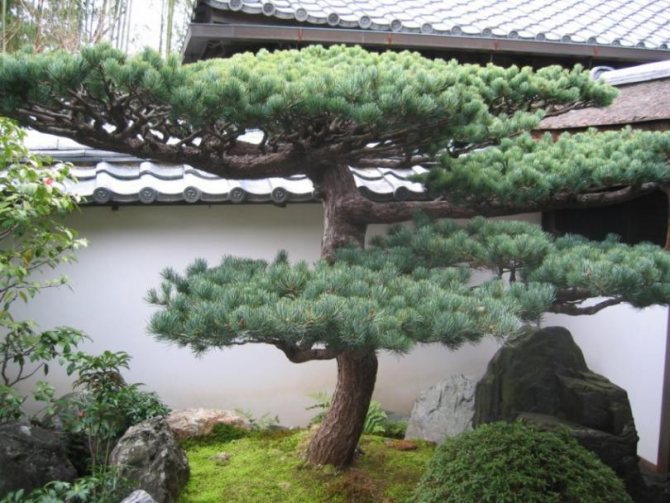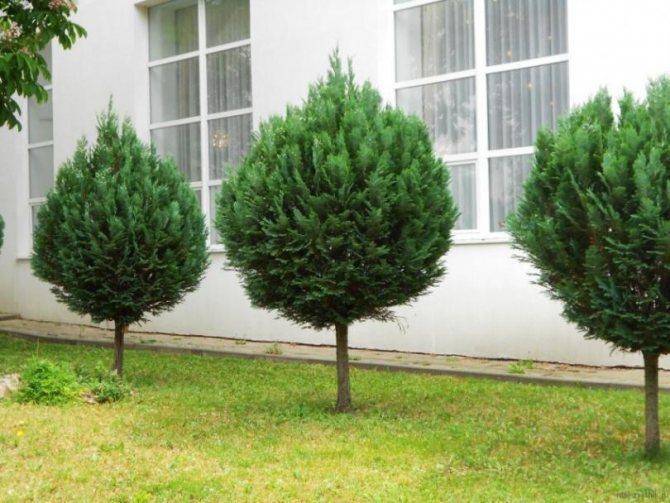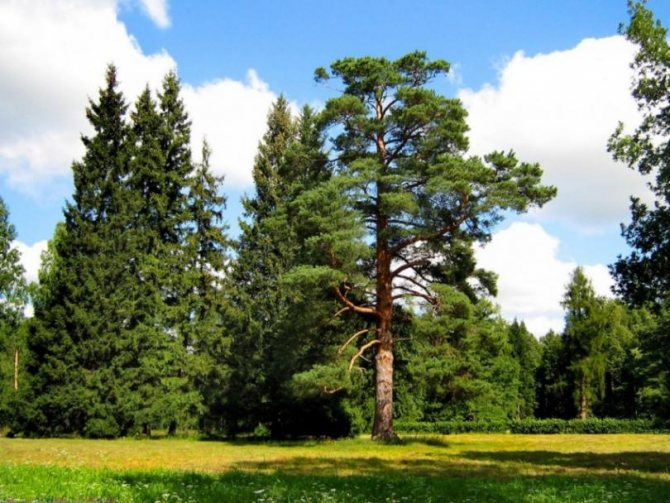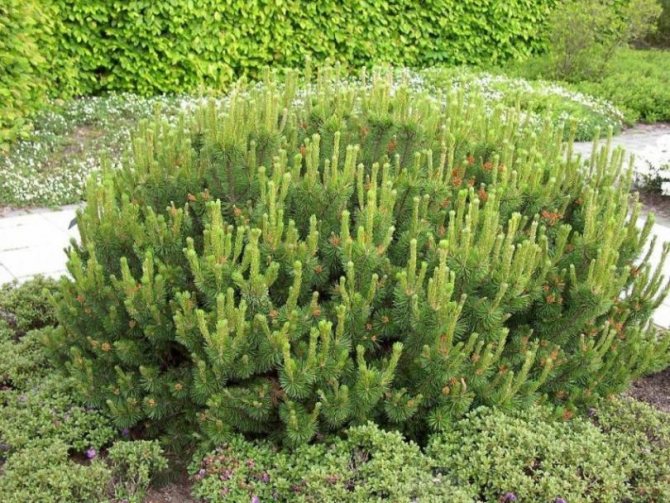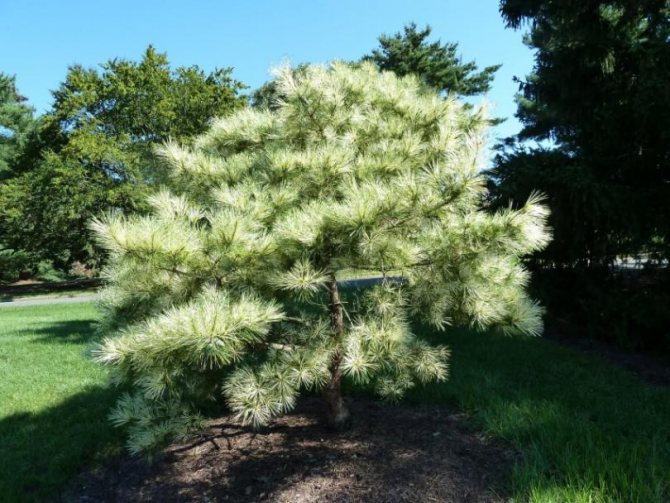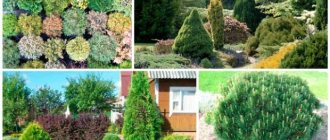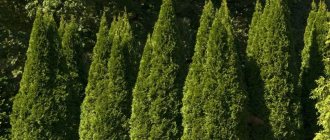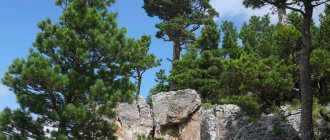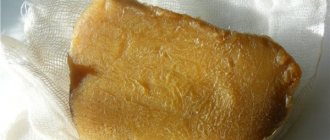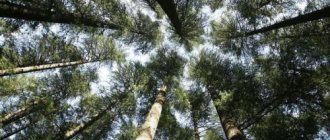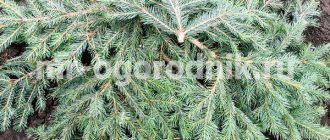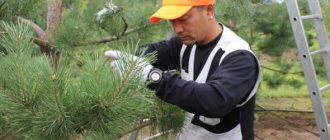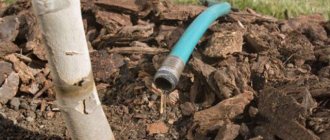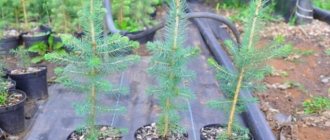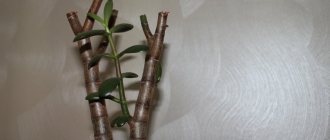It is very difficult to achieve a beautiful crown from coniferous trees, and the art of its formation in landscape design is called nivaki. The same term has a broader meaning. This is the name for a group of conifers and deciduous plants that are grown to create Japanese-style gardens.
Those who want to make a corner of Japanese culture on their site, it is important to understand that not all Japanese trees are suitable for our climate. In general, designers recommend focusing on your own nature, drawing inspiration from there.
Of course, birches for a Japanese garden will be completely atypical, but ordinary pine or its varieties are quite suitable for this. It is widespread in the European part of Russia and in Siberia, so the formation of pine is one of the main tasks when creating a Japanese garden.
In order for the pine crown to acquire the desired shape, you need to control its growth. For this, several methods are used, which are also valid for other types of conifers:
- Thinning. In the crown, individual branches are removed (in whole or in part), which prevent it from taking the desired shape.
- Topping. Young pine shoots are in the shape of a candle, only a few centimeters long, which then opens. If you shorten the candle from half to 2/3, the needles will not grow up and forward, but to the sides, making the crown thicker. Pinching is recommended in late spring - early summer.
- Stretching branches. The branches are able to take a new shape after a few weeks if they are bent away from their usual position and fixed. Thus, the crown can be given the desired shape without damaging or cutting off the shoots.
When starting to form a nivaki pine on a small tree, you need to imagine how much it will grow in a few years. Pinching and pruning does not go unnoticed, as the tree must spend its nutritious juices somewhere. The result of this is the rapid growth of branches and the appearance of many new candles, so every year the procedures for forming the crown will become more and more laborious. And excessive inhibition of growth can even lead to plant diseases due to a weakening of their immune system.

To keep trees healthy, pruned shoots need to be disinfected. They have the same disinfection rules as people, since the nature of microbes and viruses is always the same. If you do not have special processing compounds, moisten the pruning tool with regular vodka. But the branches need to be treated with stimulants - for example, emistim or zircon. Twice a year, in spring and autumn, the branches additionally need to be treated with fungicides.This is the name of substances that fight against fungal diseases of plants.
It is possible to start the formation of Nivaki within 5-6 years after its planting. At the first stages, there are not very many branches of the tree, so they are not engaged in pruning and pinching. The main work of crown formation is to fix the branches to obtain the desired shape.
Subsequently, when the tree grows, it will have more branches. They can already be cut, and every year this will have to be done more and more often. Subsequently, there will be so many needles that it will be necessary to comb it out. Each fall, some needles die off, and if not removed, they can become a source of disease for the rest of the tree. The needles are collected on a lining under the tree, and then burned.
A good and beautiful picture will turn out if you give the crown the shape of a ball. Pine, like most trees, tends to grow straight up, and its standard crown shape resembles a cone. To give it the shape of a ball, young shoots are shortened, and such a pine tree begins to grow "in breadth". However, the combination of pine with other trees is very important here, which can take away light and nutrition from it. The shape of the crown at the slightest imbalance will be disturbed, and then it will have to be trimmed with an ordinary pruner.
More surprises can be presented by the mountain pine, which in the conditions of the plain begins to grow in a completely different way. The growth rate is impressive, so the owners of the site are tempted to shorten almost all branches. This can lead to disruption of the internal metabolic processes of the tree and its death.
All branches cannot be cut off at once; if it is necessary to give the crown the desired shape, then it is advisable to extend this process for several years. If you overdid it with pruning, but young shoots appear on the trunk, in no case touch them. Leave the tree alone and it will heal itself.
Pine tree in Japanese style. NIVAKI styles
In Japanese gardens, trees are shaped and trimmed regularly. Such formed garden trees are called nivaki. The word "nivaki" consists of two hieroglyphs - "tree" and "garden". Many people have heard the name "garden bonsai", but this is not true. The word "bonsai" means "tree on a tray," and nivakas always grow with their roots directly in the garden soil. But I must say that the principles of shaping a tree in bonsai and nivaki are in many ways similar. There are eight styles of nivaki. Each of them should be used in a strictly defined place.
NIVAKI STYLES
1. Chyokan is a straight tree. The tree should have one straight trunk. The crown is formed in the form of a triangle with the top up.
Sowing seeds
To make a spruce bonsai, it is necessary to soak the seeds in a solution of potassium permanganate for a day, and then place them in water for another 24 hours. Sowing is carried out in a container with sand. The seeds are sown with a depth of 1-2 cm. Then the container with the crops is placed in a cold place for two months. Sowing can be placed on the balcony or left in the garage.
With the onset of spring, the container is transferred to the house and placed in a bright place, watered. After three weeks, small Christmas trees appear. Once they reach 10 cm, bonsai spruce begins to form.
For three years, the tree has been watered once a week. In the spring, fertilizers are applied and only after three years the tree is transplanted into a bonsai. Be sure to carry out the formation of a bonsai spruce, pinching the top of its head, cutting.
Bonsai photos
There are various styles and trends of bonsai that allow you to turn ordinary conifers into real works of art.
Did you know? One of the modern trends in bonsai is the kokedama style. It involves the creation of moss balls and is often referred to as art for the impatient.
To create mini-trees, various types of the Pine family are used:
- Norway spruce - such a bonsai can have not only the usual conical shape, but also a tiered arrangement of the crown.
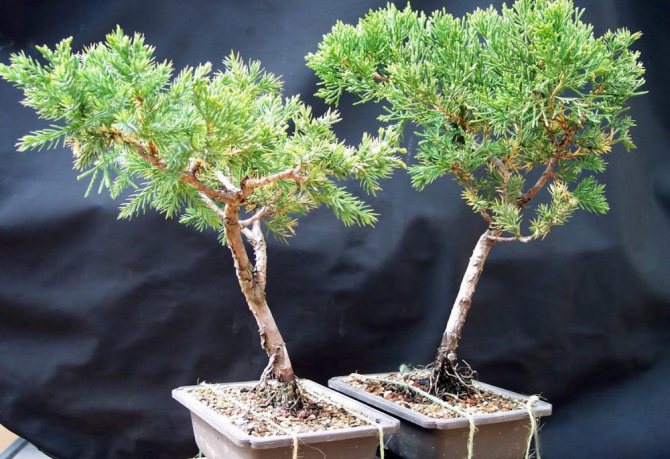

- Blue spruce differs in the bluish color of the needles and has an interesting conical shape.
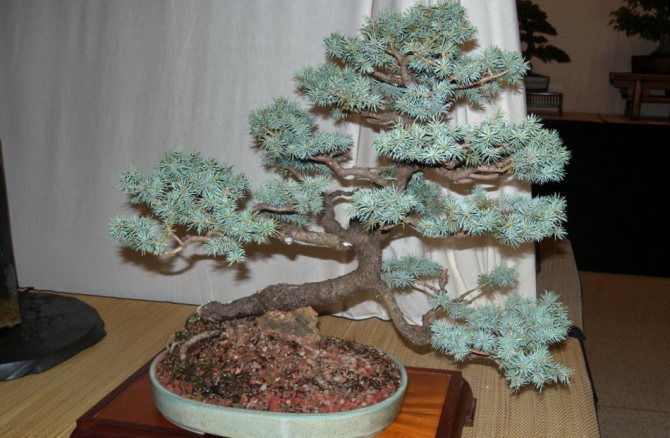

- Canadian spruce (conic) grows rather slowly, adding only 2 cm in growth annually. This makes it easy to care for her at home.
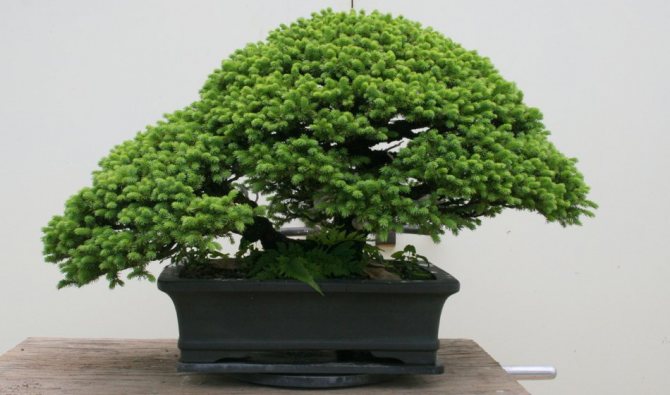

You can also grow Christmas trees in a bonsai style circle right on the site or in the garden, creating interesting compositions from them. Spruce bonsai is a rather capricious plant that requires proper care, especially during the winter season.
Learn how to grow spruce from pine cone seeds.
If you do not study all the features of the procedure for watering, fertilizing and regulating the ambient temperature, the tree may begin to dry out. If you pay enough attention to the bonsai, it will delight others with its beautiful color and unique shape for many decades.
Scotch pine. Scots pine crown formation
It turns out that you can form a crown of a pine. Moreover, this is not difficult at all. To do this, use the method of pinching a young shoot. As soon as the young shoot of Scots pine has finished its growth, but has not yet managed to form needles (that is, it is a "candle"), it must be pinched (not cut!) To the desired length. Usually, half of the shoot is twisted with your fingers. This plant will not cause much harm and the wound will quickly heal. In this way, most conifers are formed.
The shortening of the apical shoot stimulates the intensive growth of the lateral shoots. So the crown becomes much thicker. The pinching is performed in May-June, when the needles are just beginning to separate. After that, the branch stops growing for a year. As a rule, after this, new buds begin to form, several lateral shoots. At the same time, the tip of the twig becomes fluffy and thick. Pinching can only be done once a year.
If the pine shoots are no longer "candles", but formed branches, then the formation of the crown of the Scots pine is also possible. This may be needed for thinning inside. A feature is that on an old branch, a sleeping bud will not wake up after pruning. Therefore, do not leave the hemp, but immediately cut the knot into a ring.
An important value for the formation of the crown is the place where the tree grows. If the pine is in a well-lit area, then the crown will be lush and round. Otherwise, the tree will begin to stretch and throw off the lower branches.
Shaping a pine tree into a ball
The pine tree was planted in 2002 and after a few years the shortening of the young growth all over the crown began. It worked for several years, but as soon as the nearby plants grew and began to shade part of the crown, the shape of the ball was disturbed. I had to gradually remove the lower tiers of the branches and raise the ball up


Scotch pine ball formation
Now it is no longer pinched, but simply trimmed with curb scissors
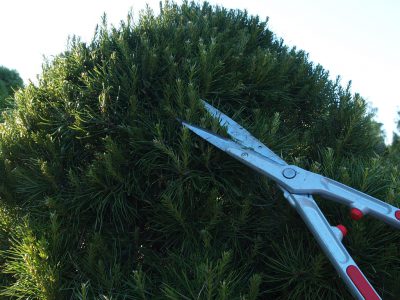

Pine trimming with curb shears
Care after the procedure
Scotch pine is very unpretentious, it does not require special growing conditions, maintaining certain modes of temperature, humidity, watering, feeding. However, when pruning, it must be borne in mind that too frequent procedures weaken the plant and can lead to diseases.
Removing branches is a significant stress for Scots pine. Therefore, after such procedures, the tree needs attention and care. If it seems "sick", you can feed the plant with mineral or phosphorus fertilizers.
It is important to remember about watering, while avoiding the other extreme - an excess of moisture. Scotch pine needs two waterings per month. Experienced gardeners after a "stressful" operation strengthen their furry "darlings" with the help of special stimulants.
The main task in the formation of Scots pine is neat, harmless and timely manipulations so that the coniferous beauty pleases with a neat look of the crown and a pleasant aroma.
What to consider when creating a nivaki
Firstly, you need to remember that the creation of a full-fledged nivaka takes several years, and maintaining the shape of the plant will have to be constantly dealt with. If you stop adjusting it, it gives uncontrollable shoots, grows strongly, and loses its attractive appearance.
When preparing for pruning, it is important to prepare scissors, pruning shears, since work on adjusting the shape, trimming is performed with a sharpened tool. Places of cuts must be treated with garden varnish, charcoal powder or, in extreme cases, pharmacy green paint.
Cutting and pruning conifers is not recommended in the rain, as the risk of infection and disease increases. After any manipulations to form nivaki, the plant should be well watered. This will give him the opportunity to recover faster from stress.
Wild pine bonsai. How to grow bonsai pine outdoors
In landscape design, bonsai pine takes pride of place. Its obvious advantages are its original form, unpretentiousness to growing conditions, resistance to low temperatures, and a high level of adaptation.
Observing certain conditions, you can grow this wonderful tree right in the ground:
- Seedling selection. Any pine that grows and hibernates in the ground in an open area is suitable for bonsai. The miniature pine tree can give a special Japanese flavor to the garden. The mountain pine bonsai is the easiest to work on because of the shrub height and small size of the branches.
- Landing technology. Living conditions for a garden bonsai should be as close as possible to the living conditions of a tree in a container. To do this, the seedling itself is shortened so that it acquires the required dwarf size, and the central part of the rhizome is truncated. In order to restrict the roots of the tree in growth, a concrete slab or a wide stone is laid at the bottom of the planting pit. For the growth of bonsai pine, scarce soil from a store or infertile light natural soil is used. In subsequent years, cut off in quarters and lateral roots around the trunk with a shovel.
- Formation of the crown. Pruning and pinching are critical steps in the cultivation of a bonsai tree. They allow the gardener to achieve the desired shape and shape. Pruning is done once a year at the end of winter. This removes all large branches that do not fit into the desired appearance of the bonsai. The pinching can be done several times over the summer. Its goal is to achieve the appearance of new young and thin shoots.
Landing features
The main condition for growing woody plants using the nivaki method is to maintain harmony in the development of the crown and root system, since this technique involves pruning both branches and roots.
Did you know? Today, there are almost 200 species of pine trees on the planet. Almost all of them grow in the Northern Hemisphere, and in Russia, rich in forests, for example, pine is the most widespread tree.
There are 2 main ways of planting annual (most preferred) pine seedlings:
- In the first of them, the seedling is planted in a container, the walls of which limit the growth of the root system. The first year the pine takes root in a new place, and the next season in the spring the branches growing inside the tree are removed, and the remaining branches are shortened by a quarter. All needles are made half as short to stimulate the growth of new shoots.
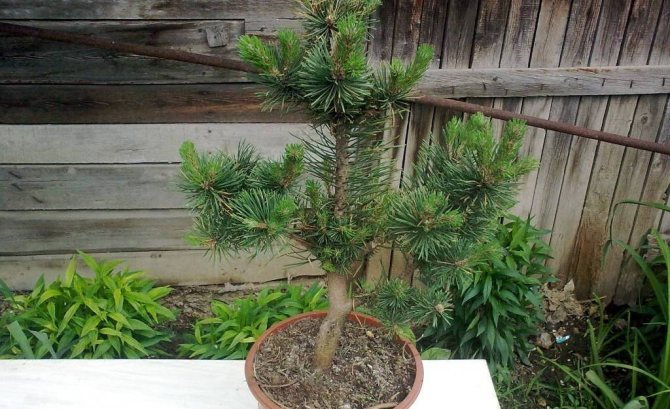

The next season, in the spring, the pine is transplanted into a new, more spacious, pot while simultaneously shortening the central root by a quarter and trimming overgrown lateral roots. The needles are again shortened by half.In the fourth year, the tree is planted under the open sky.
When work is done
Scots pine pruning for sanitary purposes is allowed at any time of the year. For example, if there is a need to urgently get rid of broken branches that are dangerous, you cannot hesitate with their removal. But the most preferred time for pruning is spring.
- In the spring months, you can stimulate the growth of young shoots, form the crown, giving it a certain appearance. Experienced gardeners advise starting work at a time when new shoots, called candles, grow, and the pine needles do not have time to bloom.
- Summer is the best time to remove old branches that prevent the sun's rays from entering the crown, as well as to stimulate growth. In young pines, you can cut off excess shoots that go beyond the crown. It is not recommended to do this in the fall, since the tree will not have time to develop a special substance, cambium, which promotes wound healing.
- Autumn is a period when a gardener can think about rejuvenating his tree. In ordinary pine, the growth zones are located at the tips of the shoots, therefore it is necessary to cut off the ends of the old shoots.
- The end of autumn and winter is not the right time for pruning, as the Scots pine becomes vulnerable, it can die from the cold.
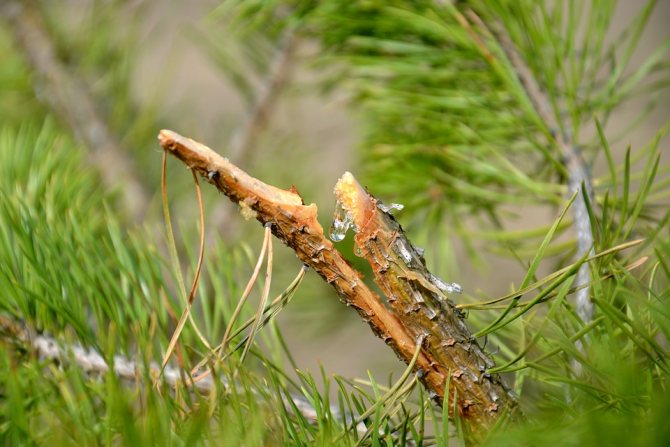

NIVAKI from thuja. DIY nivaki: from theory to practice
There are rules for the formation of garden bonsai, so let's go over them a little, and then move on to practice.
Preparation for shaping in the niwaki style
Branched, unusually picturesque in nature, coniferous trees (often pines, junipers) are preliminarily thinned out: that part of the branches that strongly thickens the crown is removed. The remaining branches, which are stronger, are shortened.
When creating a nivaki from pine, remember the following: too many young shoots covered with needles should not be removed at once, as the balance between the root system and the branches will be upset. The formation of the pine nivaka is carried out gradually, in stages, over several years. Unnecessary branches are removed step by step, and the ends of the remaining branches are pinched off, and as a result, large flat plate paws will form on the remaining branches. Pinching is best done in the spring, when arrows of young shoots appear from the buds.
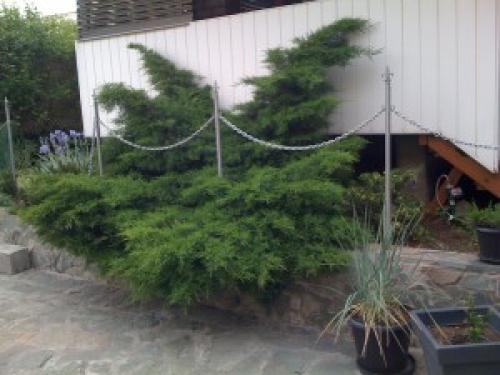

juniper before formative pruning
Based on our practice, the formation of nivaki from juniper is less complicated. First, because juniper can be formed at any time of the growing season. Secondly, instead of pinching young shoots, "plates" can be formed with garden shears and pruning shears.
Basic principles of garden bonsai formation
- To make your ephedra look picturesque in the future, the branches left to form the plates are arranged in tiers and strictly make sure that the lower branches are longer than the upper ones. Of course, the higher branches grow better - they get more sun. Therefore, with regular pruning, the upper tier is cut more intensively. And do not feel sorry for the shoots that have grown up at the top, otherwise the branches located below will simply wither away.
- When forming a nivaki, the branches should be placed as evenly as possible, and they should not intersect or intertwine with each other. In some cases, they are pulled down with bamboo sticks and twine to create the illusion of a naturally aged tree.
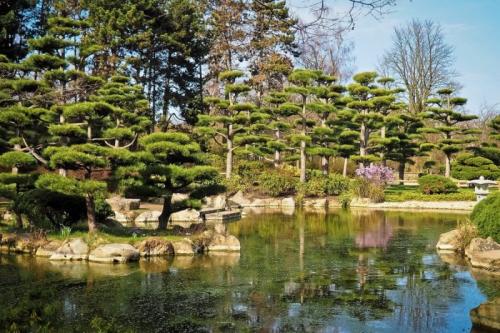

Deciduous
In the Moscow region, not all types of deciduous trees and shrubs can be cut - the constant removal of the vegetative mass oppresses them as well as conifers. Traditionally they cut:
- Hawthorns are blood red and monopestile
- Cotoneaster brilliant
- Bubble
- Riverine maples, Tatar
- Derain white, blood red, scion
- Chubushnik
- Alpine and golden currants
- Willow - species
The shape of the haircut, in principle, can be any, the finer the foliage, the more complex it can be.Be sure to pay attention to the growth rate. For example, the bladder will have to be cut at least 4 times per season. But when cutting alpine currants, you can limit yourself to 2.
Also, when choosing a shape, you should remember about the purpose of the object. A hedge, a ball, a cone can be a backdrop for other plants, and a niwaki-style haircut is always an accent.
Bonsai sizes
Bonsai sizes vary. The smallest species barely reach ten centimeters, and if the trees are impressive in size, then you can count on wonderful compositions about one and a half meters. Moreover, small and large species can be of different ages: small ones grow for more than one year, and large ones can grow in just a couple of years.
The size of the bonsai is determined at the very beginning of the formation of the tree. Most often, skeletal branches, their rudiments, are already on the plant and determine in what style the bonsai will be performed.
Usually, the size of the bonsai is determined by the size of the leaves. Mini-compositions of any size are formed from trees with small leaves. Bonsai with long needles should be proportioned so that the finished tree looks harmonious. For example, some types of conifers grow up to a meter or more. Spruce is usually used to form bonsai up to 30 cm high.
When and how to prune junipers?
Sometimes in the gardens you can also find species common juniper (Juniperus communis), which can also reach a decent height, unlike its varietal counterparts (up to 10 meters).
Some other tall junipers, such as numerous varieties rock juniper (Juniperus scopulorum) may also need formative pruning. This tree species tolerates formative pruning very easily, however, it is important to consider some features here.
Read more about the types and varieties of juniper in the article Junipers in the garden - types and uses.
To help junipers form a denser and narrower crown, slightly limit their spread in width. Hedge shears or pruning shears are ideal for this. This coniferous species responds to pruning with a burst of growth. Subsequently, new shoots fill possible voids, and the tree looks slimmer and fluffier.
The most suitable time for cutting junipers is considered to be the period when junipers are not actively growing: in autumn - from September to October, or in spring - from April to May. But during the period of active growth of shoots - June and July - it is better not to touch the trees, since at this time the maximum sap flow occurs, as a result of which pruning can lead to excessive release of juice from the cuts and weakening of plants.
Weather conditions are also important when planning your juniper pruning. So, in extreme heat, it is also better not to cut these trees, because the high temperature will contribute to the rapid evaporation of the juices, which can cause browning of the tips and further dying off of the trimmed shoots. At low temperatures, in combination with high humidity, the wounds from the sections heal poorly and become a breeding ground for pathogenic bacteria and sometimes harmful insects.
Similar rules will be valid not only for junipers, but also for other conifers with flat needles - thujas, yews, cypress trees, etc.
Unlike other types of juniper, juniper Cossack (Juniperus sabina) is a poisonous plant. When cutting bushes of this type, care must be taken, it is imperative to use personal protective equipment that does not allow contact with poisonous juice. Essential oils of Cossack juniper, in contact with the skin, cause burns.
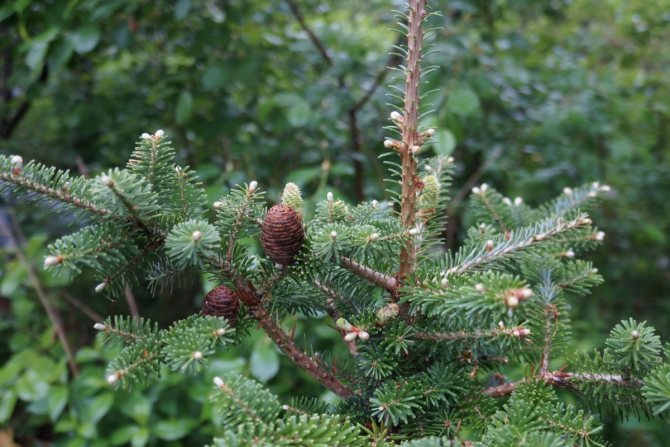

Fir is characterized by the formation of a bald crown, which overgrows over time. <людмила>
Step-by-step instruction
For work you may need:
- hand saw for wood Is the easiest tool to use;
- sharp garden shears or pruning shears for branches with a diameter less than 20 mm.
Please note that the pruner comes in the form of scissors and is designed to cut live branches. And there is a pruner, in which the lower base is made in the shape of an anvil - it is used to remove dry branches. This variety works like an ax, so it cannot cleanly cut live branches.
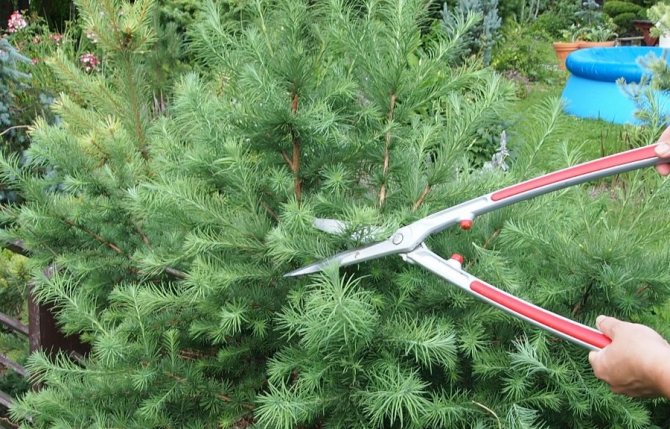

Scissor-shaped pruner for cutting live branches!
Basic rules for pruning:
- Before work, inspect the tree and outline the goals: density of branches, general shape, size. This is important for dwarf and tall species of pines, spruces and firs.
- You need to work with a young tree, adults do not tolerate branch removal and get sick for a long time.
- You cannot remove the central barrel. Otherwise, you get a bushy plant of an indefinite shape. In addition, the absence of a central trunk will make the tree more susceptible to insect infestation and disease.
- If a branch needs to be partially sawed off, be sure to leave a green shoot near the cut, otherwise it will die off completely.
- Unlike coniferous shrubs, pine does not have a "dead zone" (a sector in which needles die off due to density), so it needs less pruning. But the lower and lush inner branches can die off due to shading, in which case it is better to remove them.
In order to rejuvenate
Pay attention to the technique of forming and growing a pine branch. At the end, a normal bud is formed, which gives rise to the next year. If you do not prevent it from growing, then the branch will stretch out, the needles will fall along the length of the branch, and you will get a long shoot with landscaping at the end.
Important! In order to trim, wear clothes that you will not mind throwing away. The pine resin that will be on it after the procedure is almost not washed off.
Therefore, the gardener must:
- shorten the length to stop the growth of the branch and activate the "dormant buds";
- cut off old branches that no longer have buds that can be activated from pruning.
This method of tree rejuvenation in a summer cottage is usually used once every three years.
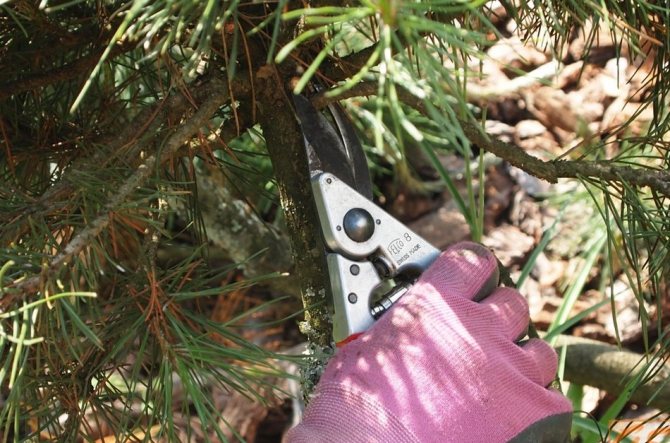

Step by step instructions for rejuvenation:
- Cut the side branches 10-15 cm.
- Leave the lower stems longer than the upper ones to shape the tree nicely into a cone shape.
Crown formation
Probably the first bonsai trees were natural formations, and people noticed this form and began to cultivate it in gardens. Styles are characterized by the presence of symmetry or asymmetry in shape, curved lines that should embody the influence of natural factors: wind, snow, etc.
Among the styles of shaping the tree, there are:
- kotobuki;
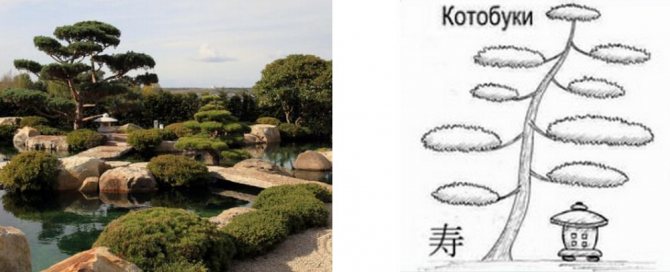

- Kyoto uniform;
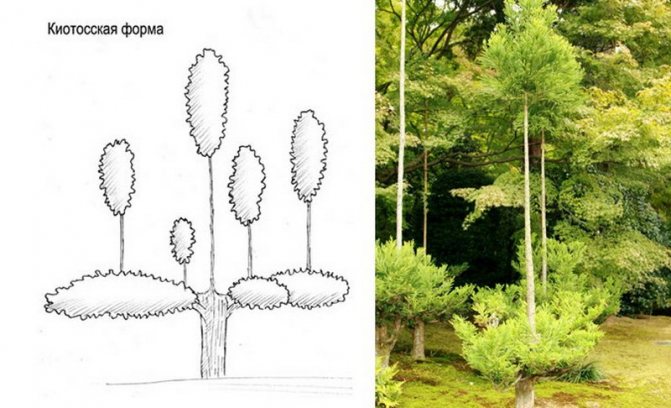

- chocan;
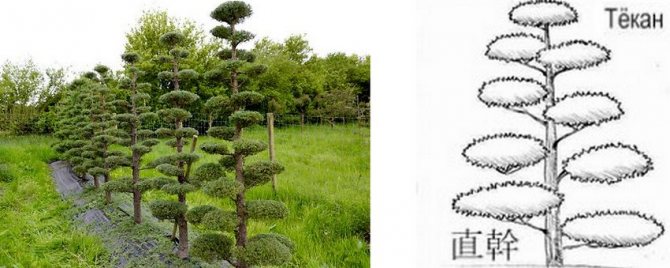

- sokan;
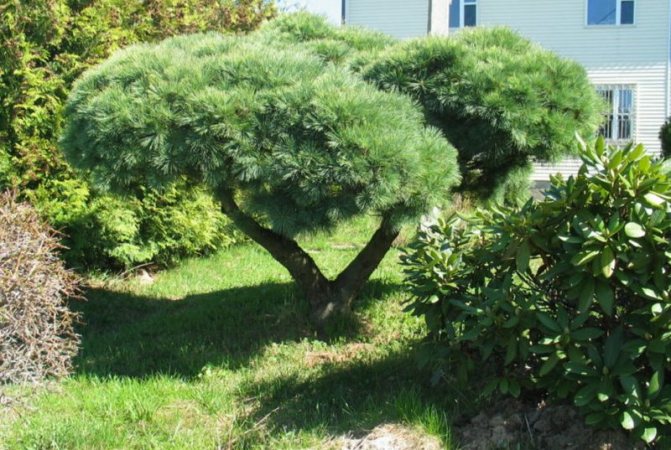

- nivaki other.
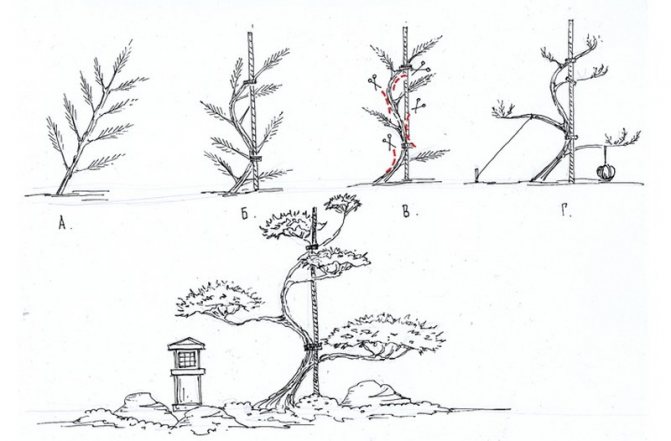

Pines and spruces are conveniently cone-shaped, as this is their natural shape. But their branches are also well formed into a pyramid, tiered structure, or create the shape of a familiar bonsai. A haircut allows you to slow down growth and make the crown more lush and green. Bonsai is made when the seedling is not older than 7 years.
In this case, each shoot must be cut off separately, so as to obtain the desired shape. Formative pruning is carried out in early May, when young shoots have formed, but flowering has not yet begun. The next year, the operation is repeated, and then the achieved shape is simply maintained as needed.
Did you know? Pine trees appeared on Earth at the beginning of the Jurassic period
—
about 130
–
200 million years ago.
Pruning scheme in stages:
- Imagine the general shape of the tree, it is better to draw or take as a basis the photo you like.
- Examine your pine tree. Decide which branches to trim. Remove some, but not all, or the wood will dry out.
- The bonsai technique also involves bending the branches into a horizontal shape using stretchers and wire. This works well with young, flexible branches.
- If the shoot needs to be chopped off entirely, make an incision in the ring to create a resin that will seal the wound.
- To trim the pine tree into a beautiful spherical shape, you need to reduce the young growths that have appeared to different lengths - from 2 to 8 cm. Low pruning leads to the appearance of highly branched small branches, forming a dense ball, which gives the branches a fluffiness.
- To improve the decorative properties, plucking of a part of the needles is also practiced. This will improve air exchange in the crown and allow the formation of decorative groups of elements.
- Pay attention to the natural shape of the tree. Black pine (Austrian) at a young age is broad-conical, and in mature it is umbrella-shaped. Weymouth pine, or white oriental, is narrow pyramidal. Performing crowning in such a way as to get a ball out of the cone is not welcomed by specialists in bonsai creation.
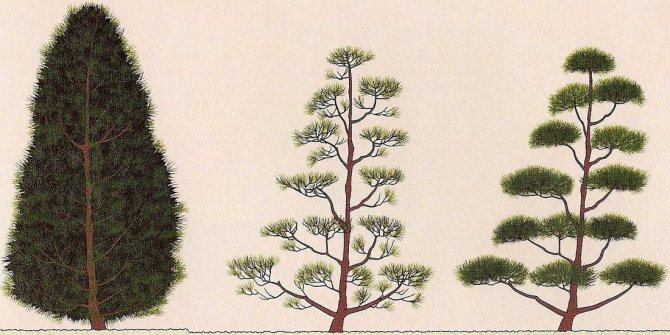

If you intend to form a niwaki-style pine tree, then the algorithm will be as follows:
- Perform sanitary pruning by removing dry, sparse needles and thinned branches. For this, the end of autumn or the beginning of winter is suitable, when the air temperature drops to + 5 ° C.
- Nivaki is performed according to the principle of a triangle: each individual branch should have the shape and location of the needles close to a triangle directed with one edge up. Leave the formative pruning in mid-summer.
- Immediately giving the desired shape will not work. It is unacceptable to cut off more than 30% of the green mass of the plant, so select and modify those branches to which you can give it, and next year you will form the next group.
- You need to take care of the form. To do this, pinch those shoots that violate it.
Pinching
After the tree has been shaped, work begins with growth. In some places it needs to be slowed down, and in others it needs to be strengthened. Pay attention to the branch growth technique. First, a new shoot (candle) appears from the bud, then it lengthens, and after that the needles go into growth. They will grow until mid-summer. In the interval between the appearance of new needles and their full formation by mid-July, pinching is carried out. Someone does it with nails, someone with scissors.
Did you know? Chinese white pine walnut is moderately toxic. If you taste it, then a metallic taste will remain in your mouth for several days. This medical condition is called
«
pine mouth syndrome
»
.
Both old and new needles are inspected to ensure they fit in shape. When plucking, observe the basic rule: the more needles, the more vigorous the growth of the branch. If you need it to continue to develop, leave more needles. At the end of the shoot that you are pinching, a whorl of new small shoots with shortened needles will form next season. Thus, more lush sections of the branch are obtained.
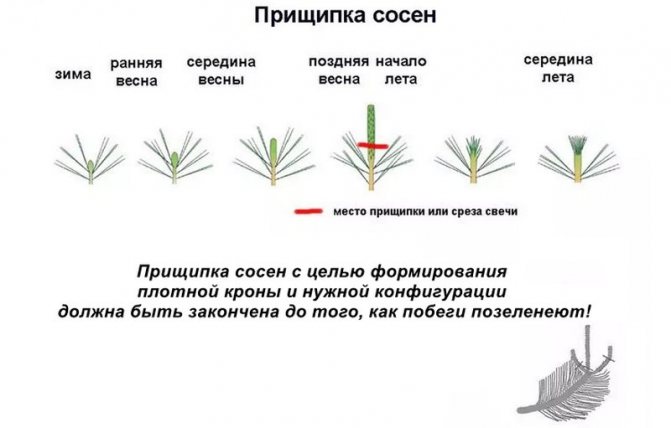

Fewer needles are left on the upper shoots and more on the weak, lower and internal ones. Also, the internal branches prefer not to touch at all in order to maintain their fluffiness. Pinching increases the air circulation in the crown, helps to distribute the growth energy through the tree, directing it to the desired areas.
Thinning
Thinning is the complete or partial removal of branches. It is carried out in order to remove those branches that do not fit into the overall configuration. Thinning also prevents thickening. Branches that may rub against each other are the source of a potential problem.
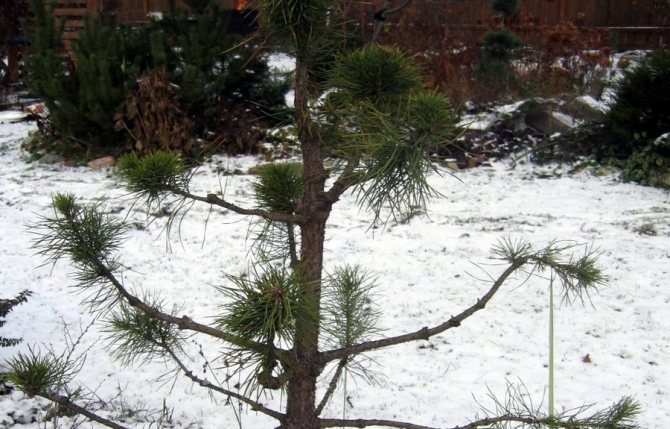

Mechanical damage creates conditions for fungal infection of the tree. Branches with an angle greater than 90 ° can break under a gust of wind, so they must also be removed. Thinning is done along with sanitary pruning as needed.
Pruning
Conifers grow in any, including unfavorable climates, so it seems that pruning is not necessary for them.But without it, the tree will look poorly pubescent, with long branches and sparse needles.
You will be interested in learning how to prune a niwaki-style pine tree.
When planning a pruning, clearly set goals for yourself: why you need to do it, and what the result should be. Unlike hardwoods, pruning conifers does not enhance their growth. It is justified only in those cases when it comes to its sanitary variety or shaping the tree.
Sanitary pruning
Sanitary pruning is designed to rejuvenate the plant. It consists of removing the lower branches of a pine tree. Also, gardeners cut all dry, damaged and diseased shoots. This should be done every time a problem arises and it must be safely corrected. Pruning can help keep the tree healthy and encourage dormant buds to grow more vigorously.
Important! Rejuvenation pruning is done every 3 years. Thanks to this procedure, the tree will look great and take up much less space.
Regardless of the reason for pruning, the methods for pruning are the same. You can remove a dry branch entirely, as well as shorten or pinch part of the shoot. But, as a rule, pinching or shaping is not a sanitary pruning.
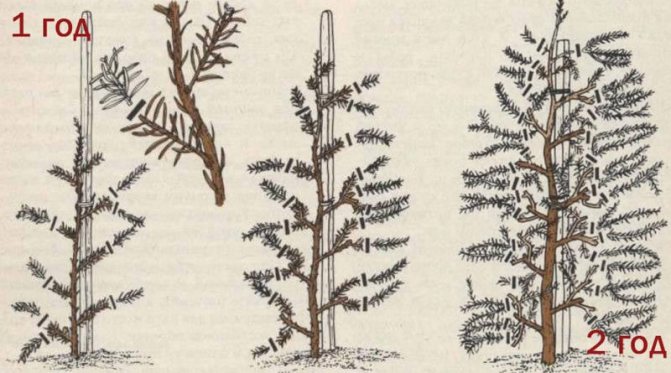

Aging tree
When grown from white bonsai spruce, or from another type of coniferous tree, artificial aging can be carried out. This is done by various methods, among which the simplest and most popular is the removal of the bark from the trunk and twigs using a sharp knife. Such work is difficult and requires special skill. To realize this, you need to train, have practical experience.
With artificial aging of a tree, it is impossible to completely remove the entire bark from those branches that are planned to be left alive. They should have a strip running from the bottom to the very top. Nutrients will flow through the bark to the entire branch.
Those parts that need to be killed are subjected to complete removal of the bark. Bare wood is cut with a knife designed for wood carving. Removing the bark from the trunk and branches is not particularly difficult.
When shaping a bonsai from a Canadian spruce or from another type of tree, you can apply a variety of techniques. For example, there is the sabamika technique, which involves splitting the trunk. Outwardly, the miniature looks like a tree that has been struck by lightning and split the trunk into two parts. Nippers and wedges are used for splitting. This type of technique allows the bonsai to become more powerful and strong.
Formative pruning of ephedra
This type of tree care is divided into two types. They include:
- molding;
- decorative.
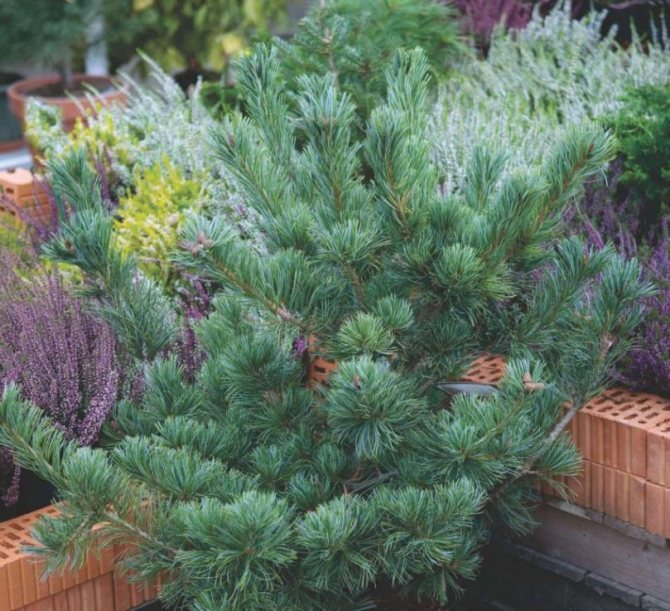

Each of them helps to give an unusual shape to coniferous vegetation. Thanks to this, it is possible to distinguish the green element from other crops.
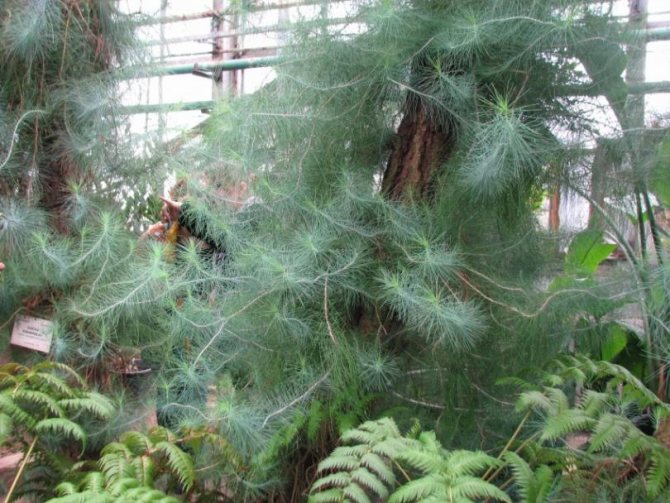

How to prune a pine tree? With a molding haircut, the crown is more natural than with a decorative one. In the second case, it has clear edges and corners.
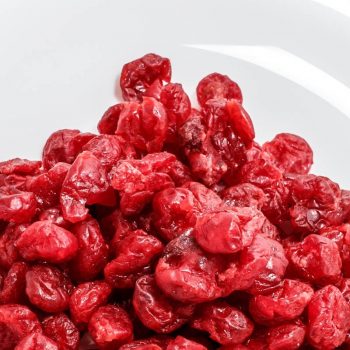

How to dry cherries - step by step instructions, properties of dried fruit and the best recipes for making dried cherries (135 photos)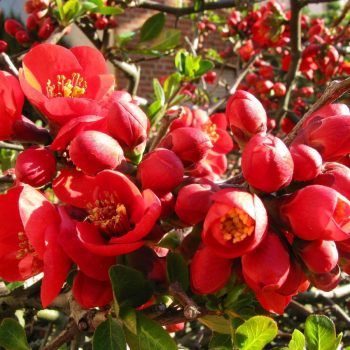

Japanese quince: description of the plant, planting and care features. 100 photos and videos of application for decorating a decorative garden
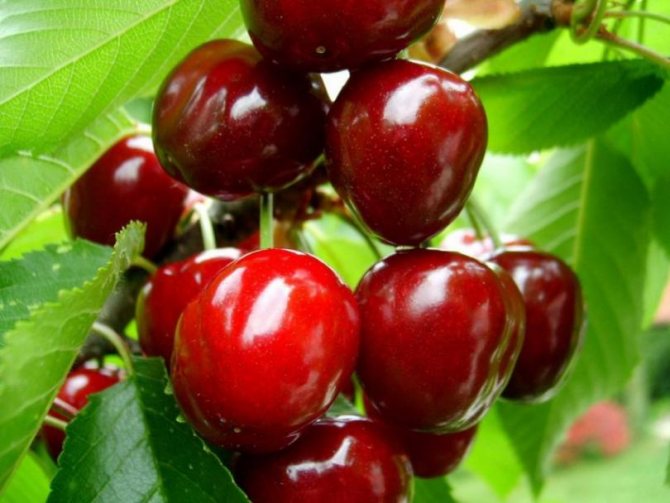

Where the cherry grows - the conditions for the maintenance and growth of the tree. Tips for choosing a place on the site and choosing neighbors for cherries (145 photos)
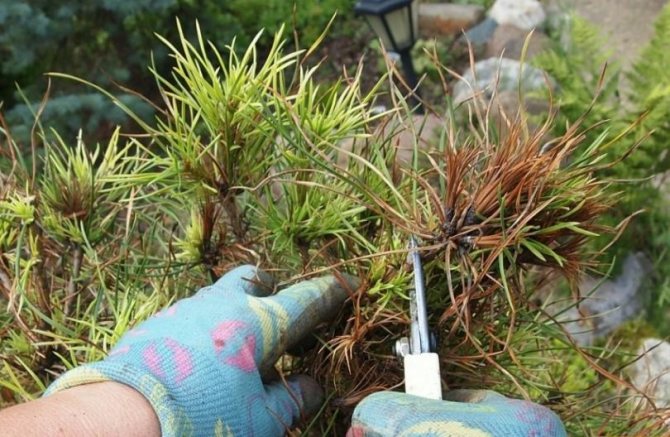

Special garden equipment is used here, which cuts branches at the correct angle. A decorative haircut is often used for regular style flower beds. It is important here to maintain the original appearance of the vegetation for a long time.
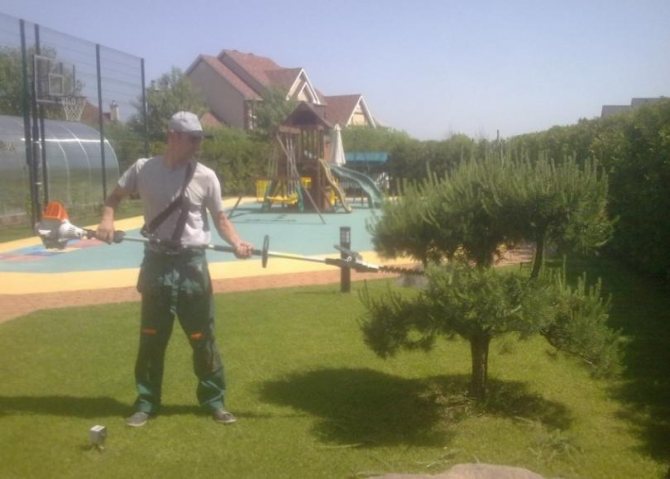

As a rule, these procedures are carried out in mid-spring or early autumn. In the summer, it is forbidden to do haircuts and crown shaping. The wood loses a lot of moisture, which can cause the wood to dry out.
Down growth
Sometimes, according to the author's idea, the bonsai should direct the branches downward. To realize this, a wire guy is made.This is not a laborious process like wire laying, but it does have its drawbacks. This method allows you to change the direction of growth of branches in only one direction.
The guy method is used mainly where it is necessary to direct the branches down.
To learn how to shape a bonsai using wire, certain skills are required. For exercise, it is recommended to more often put wire on trees, giving them a different shape. Regular training will improve your skills and form the most unusual types of bonsai.
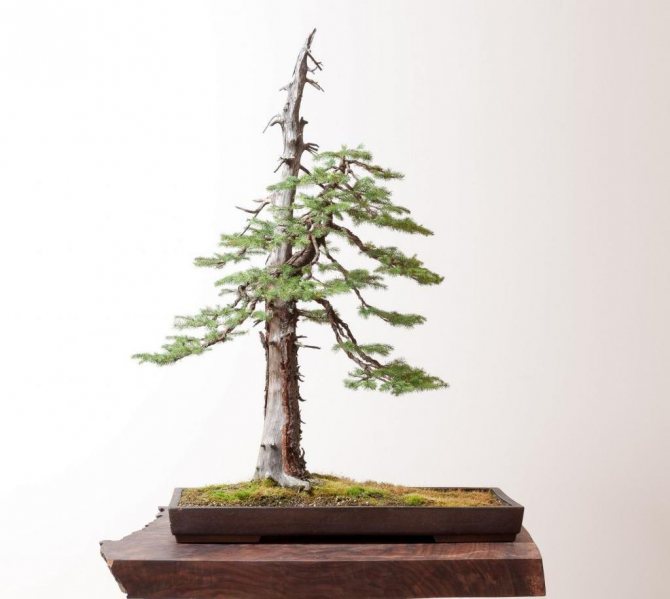

We form a creeping crown shape like a cedar dwarf
Dwarf cedar-dwarf species of cedar pines, formed in harsh climatic conditions. For experienced gardeners, this is a very desirable plant, since its nuts are the largest of pine nuts (there are 70-75 pieces in a 100 g sample). And for the designer, the more desirable is the shape of the stem of this plant, creeping and slightly rising above the ground. This stem shape is successfully used for decorating slopes and terraces. But the cedar dwarf plant itself is very capricious.
Several varieties with creeping stems have been bred in the mountain pine. These are less whimsical plants, but they grow slowly and are difficult to get. As in previous cases, Scots pine helps out. The gardener's task is to create conditions under which a powerful tree should drastically slow down its growth. Of course, it will not be possible to achieve complete identity with the dwarf tree due to the difference in size, but the creeping stems of the Scots pine can still be formed.
A pit for planting is prepared, as in the previous case: crushed stone and clay should slow down the growth of roots. Young pine plants with flexible trunks can be planted one at a time or by a fire if a more symmetrical creeping bush is desired. The flexible stem is pressed to the ground. In order not to break it, the plants are planted immediately under the maximum slope.
If there are no special pins, they can be easily made from galvanized wire from the old chain-link mesh.
The wire is straightened, cut into 50 cm pieces and, bent in half, hairpins are made, which make it easy to press thin stems and skeletal branches to the ground. If, as it grows, the strengthened main stem begins to rise, then bricks are placed on the sides of it and a board is placed on them (like a bridge), and the board itself is loaded so that it presses the stem. If, as the creeping stem forms, some part of it rises, it's not scary. On the contrary, it will even give a special charm to the whole plant.
The growing skeletal branches are bent away from the trunk and also pressed to the ground. If the central buds on young shoots are not removed, then the annual growth in an actively growing specimen will be about 40-50 cm. If the buds are removed, then the young shoots will be shorter and more flexible. It is more convenient to form such a plant than a fast-growing one. Approximately in the fifth or sixth summer after planting, the creeping stems will get stronger and fixed.
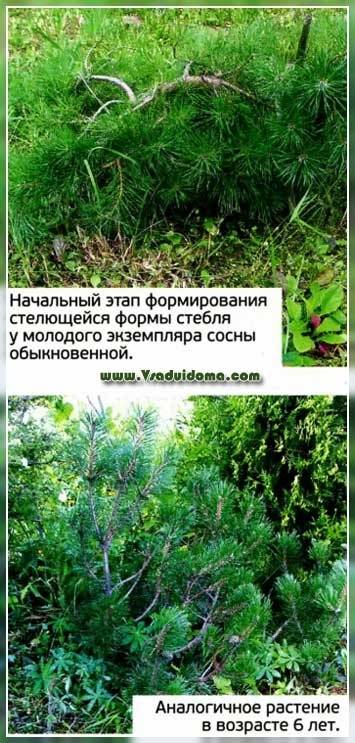

But the plant will periodically strive to give out some kind of vertical shoot. It must be removed or pressed to the ground.
Timing of various types of pruning
- regardless of the season, sanitary pruning is carried out if necessary. For example, if a large branch is cracked, or the first signs of an incipient disease appear on individual branches;
- in the spring, before the active blooming of the candles begins, you should start forming the crown and take care of the compact top. The timing of spring pruning depends on the climatic conditions of a particular area, but on average this period falls around the end of May - beginning of June;
- in summer, too overgrown shoots that protrude beyond the crown are subject to pruning;
- in the fall, before the onset of cold weather, rejuvenating pruning is most often carried out.On old branches that have lost some of the needles, the tips are removed, thus stimulating the awakening of dormant buds and the germination of new shoots next spring;
- autumn and winter are not the right time for pruning. During this period, cambium is practically not isolated, so the sections will be very vulnerable to various infections, moreover, shortened shoots may freeze out.
When carrying out decorative and rejuvenating pruning, it is imperative to take into account the condition of the tree as a whole - it must be completely healthy. But it is better to save a weakened or recovered plant from such procedures - in this case, dormant buds are unlikely to wake up, and the plant will be weakened even more
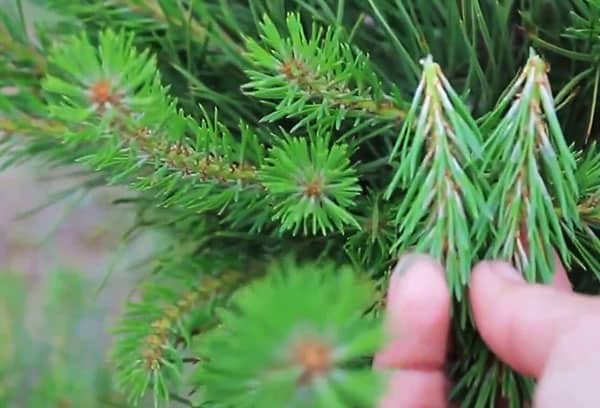

Change in the direction of growth
In bonsai, leading in several trunks, with the help of brackets, you can correct and correct the direction of growth, the shape of individual trunks. To complete this work, it is necessary to make a lot of effort, regularly check whether the wire has grown into the bark, and rearrange the staples in a timely manner.
In order not to damage the bark with the staples, pieces of leather are placed under them. Changing the direction of growth with staples is appropriate in those places where wire cannot be applied.
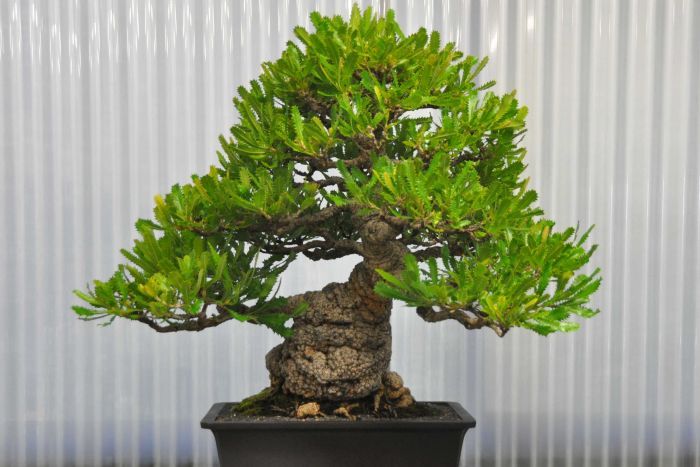

Choosing plants for nivaki and garden bonsai?
We list the most common types: Chinese juniper, scaly juniper, black pine, multicolor pine, common pine, berry yew, winged euonymus, European euonymus, multifoliate elm, rough elm.
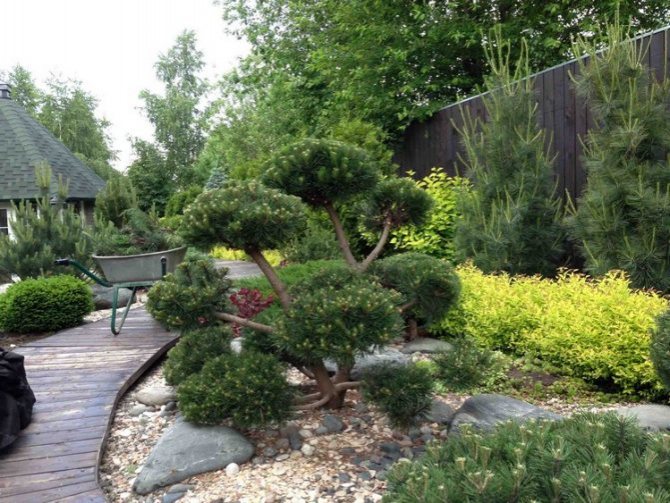

As you can see from the above list, most of the plants are conifers.
Varieties of pruning of coniferous crops
Experienced landscape designers distinguish several types of pruning of ordinary spruce and pine. These include:
- anti-aging;
- revitalizing;
- formative;
- combined.

